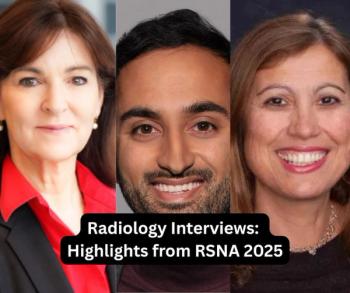
CADsciences reaches beyond diagnosis
CADsciences is moving beyond lesion identification to include treatment monitoring as well. The White Plains, NY-based computer-aided detection company has distinguished itself by providing full-time-point analysis of contrast agent pharmacokinetics and tissue physiology in MR studies of the breast and prostate, which can prove diagnostically challenging. But these capabilities are no longer enough, according to Jan Mintorovitch, Ph.D., chief scientific officer at CADsciences.
CADsciences is moving beyond lesion identification to include treatment monitoring as well. The White Plains, NY-based computer-aided detection company has distinguished itself by providing full-time-point analysis of contrast agent pharmacokinetics and tissue physiology in MR studies of the breast and prostate, which can prove diagnostically challenging. But these capabilities are no longer enough, according to Jan Mintorovitch, Ph.D., chief scientific officer at CADsciences.
"We want to offer a complete package. We want to take our software to the next level and look at how lesions react to treatment," Mintorovitch said. "For us, this is a natural progression."
CADsciences released its fTP (full-time-point) analysis software algorithm in 2005 to overcome the drawbacks of products that use only three time points - time of contrast agent arrival in the lesion, time of maximum signal, and time of the last measurement - to measure contrast agent dynamics.
Unlike three-time-point analysis options, fTP produces a profile of contrast concentration that is not affected by noise or patient motion and a set of contrast curves that reflect underlying pharmacokinetics. The software also continuously analyzes the entire data set, not just discrete wash-in and wash-out time points. This makes therapy monitoring based on permeability possible, according to the company.
The Therapy Response Monitoring (TRM) module quantitatively estimates changes in vascular permeability, which is an early biological marker of the response to treatment with chemotherapy, external-beam radiation, or hormone therapy. The module can show changes in permeability as early as two days after cancer treatment, far sooner than treatment-related changes in tumor size can be detected on standard anatomical imaging.
TRM also fits in with routine clinical follow-up, because it analyzes data obtained from standard dynamic contrast-enhanced MRI.
Because fTP and TRM look at flow parameters, they can be used in just about any organ. The next step for CADsciences, therefore, is to adapt its products for other organ systems.
"Our fTP product doesn't have to be used only with the breast or prostate. We can tailor it to other internal organs and bring treatment monitoring into those modules. So expansion is where the company is going," Mintorovitch said.
Newsletter
Stay at the forefront of radiology with the Diagnostic Imaging newsletter, delivering the latest news, clinical insights, and imaging advancements for today’s radiologists.




























